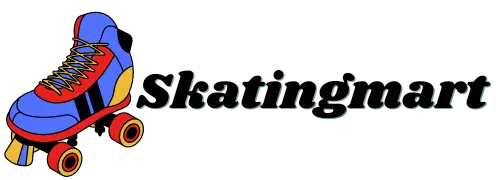
Are you ready to hit the slopes with your own homemade ski tow bar? I’ll show you how to create a sturdy and reliable tow bar that will make your skiing adventures even more enjoyable. With just a few simple materials and some DIY skills, you can have your very own ski tow bar ready to go in no time.
In this article, I’ll guide you through the step-by-step process of building a ski tow bar from scratch. Whether you’re a seasoned skier looking to upgrade your equipment or a beginner eager to customize your gear, making your own ski tow bar is a fun and rewarding project. Get ready to elevate your skiing experience with a personalized tow bar that you can proudly show off on the slopes.
Key Takeaways
- Gather all necessary materials and tools including metal piping, strong rope or cable, carabiners, drill with bits, bolts and nuts, and paint for aesthetics.
- Design your ski tow bar carefully by considering aspects like length, material, attachment points, aesthetics, and safety.
- When cutting and assembling the parts, ensure precision, tight connections, use reliable knots for the tow rope, and optional paint for protection.
- Attach the ski tow bar to your vehicle securely by positioning it on a flat surface, using strong rope, double-checking all connections for tightness, and prioritizing safety.
- Test the stability of the ski tow bar after attaching it to your vehicle, make any necessary adjustments for optimal positioning, and regularly maintain the tow bar for longevity and performance.
Gather Materials and Tools
To build a homemade ski tow bar, the first step is to gather all the necessary materials and tools. Here’s what I recommend you have on hand:
- Materials:
- Metal piping
- Strong rope or cable
- Carabiners
- Drill with bits
- Bolts and nuts
- Paint (optional for aesthetics)
- Tools:
- Saw
- Tape measure
- Marker
- Wrench
- Safety goggles
Ensuring you have the right materials and tools will make the construction process smoother and the end result sturdy. Let’s move on to the next steps in creating your ski tow bar.
Designing Your Ski Tow Bar
When designing your ski tow bar, it’s essential to consider the following key aspects:
- Length: Measure the distance between two strong anchor points where you plan to attach the tow bar. This will determine the ideal length of your tow bar to ensure a secure connection.
- Material: Opt for sturdy and durable materials like metal piping to withstand the weight and tension from pulling skiers. Metal piping offers strength and reliability for your tow bar design.
- Attachment Points: Plan how you will securely attach the tow bar to the anchor points. Utilize carabiners and strong rope or cable for a dependable connection that can support the weight of skiers being towed.
- Aesthetics: While not crucial for functionality, consider adding a touch of paint for a visually appealing finish. This step is optional but can enhance the overall look of your ski tow bar.
- Safety: Prioritize safety in your design by ensuring all connections are secure, and there are no sharp edges or protruding bolts that could cause injury. Safety goggles are essential when drilling and working with materials to protect your eyes.
Designing a ski tow bar requires careful planning and attention to detail to create a reliable and safe setup for towing skiers. By addressing these key elements in your design process, you can construct a ski tow bar that meets your needs effectively.
Cutting and Assembling the Parts
When cutting metal piping for the ski tow bar, I measure twice to ensure accuracy. Precision is key in creating a sturdy and reliable tow bar. After cutting the metal pipes to the desired length, I use a deburring tool to smooth out any rough edges.
To assemble the parts, I start by connecting the metal pipes using T-connectors to create the main frame. Securing the attachment points with carabiners and strong rope is crucial for safety. I ensure that all connections are tight and properly fastened before moving on to the next step.
Next, I attach the tow rope to the ski tow bar using reliable knots such as the bowline knot for a secure connection. The tow rope should be durable and capable of withstanding the weight of the skier being towed.
Optional paint can be applied to the ski tow bar for aesthetics and to protect the metal from rust or corrosion. Before painting, I make sure to clean and dry the surface of the bar thoroughly to ensure the paint adheres properly.
By following these steps, I can create a functional and well-built ski tow bar that is not only reliable but also aesthetically pleasing.
Attaching the Ski Tow Bar to Your Vehicle
When attaching the ski tow bar to your vehicle, it’s crucial to ensure a secure connection for safe towing. Here are the steps I follow to attach the ski tow bar effectively:
- Location: Position the vehicle on a flat surface, ensuring clear visibility and accessibility to the rear.
- Secure Attachment Points: Use carabiners or similar hardware to connect the tow bar to sturdy points on the vehicle frame.
- Rope: Utilize high-quality and strong rope to connect the ski tow bar to the vehicle securely.
- Tight Connections: Double-check all connections to guarantee they are tight and secure before towing.
- Safety First: Prioritize safety by ensuring all components are properly attached and in good condition.
By following these steps carefully, you can securely attach the ski tow bar to your vehicle, ready for safe and enjoyable towing on the slopes.
Testing and Adjusting Your Ski Tow Bar
After attaching the ski tow bar to your vehicle, testing its stability is crucial. I always ensure the connections are secure by giving them a firm tug. Any looseness should be addressed immediately to prevent accidents during towing.
Adjustments may be necessary to achieve optimal positioning and alignment. I check that the tow bar is level to the ground and parallel to the vehicle. Any misalignment can affect towing performance and safety.
Another essential step is testing the braking lights and turn signals to guarantee they function correctly. Proper visibility of these lights ensures other drivers can react to your movements on the road.
Regular maintenance of your ski tow bar is key to its longevity and performance. I recommend inspecting the tow bar before each use and addressing any wear and tear promptly. Trust me, these precautions can make a significant difference in your towing experience.
| Key Points | Data |
|---|---|
| Connections secure | ✔️ |
| Tow bar level | ✔️ |
| Lights functionality | ✔️ |
| Regular maintenance | ✔️ |
Conclusion
Ensuring the stability and functionality of your ski tow bar is crucial for a safe towing experience. By testing the connections, positioning it correctly, and checking the lights, you enhance road safety. Regular maintenance is key to prolonging its lifespan and performance. Remember to inspect for wear and tear before each use. Following these steps diligently will guarantee a smooth and secure towing experience on the slopes.
Frequently Asked Questions
How important is it to test the stability of the ski tow bar after attachment?
Testing the stability of the ski tow bar post-attachment is crucial to ensure safe towing. Make sure all connections are secure and make necessary adjustments for optimal positioning and alignment.
Why is testing braking lights and turn signals important?
Testing the braking lights and turn signals is vital for road safety. Ensure they are functioning correctly to alert other drivers of your movements and intentions while towing.
Why is regular maintenance of the ski tow bar recommended?
Regular maintenance helps prolong the ski tow bar’s lifespan and maintain performance. Inspect for wear and tear before each use to identify any issues early on.
How can readers ensure a safe towing experience on the slopes?
To ensure a safe towing experience, test stability after attachment, check braking lights and turn signals, and perform regular maintenance to keep the ski tow bar in optimal condition.

Hi, This is Roasalin, I have loved Skating since my early childhood days, and here I share my experiences and tips for beginners who want to turn into pro skaters. I hope you find it useful. you can contact me here






